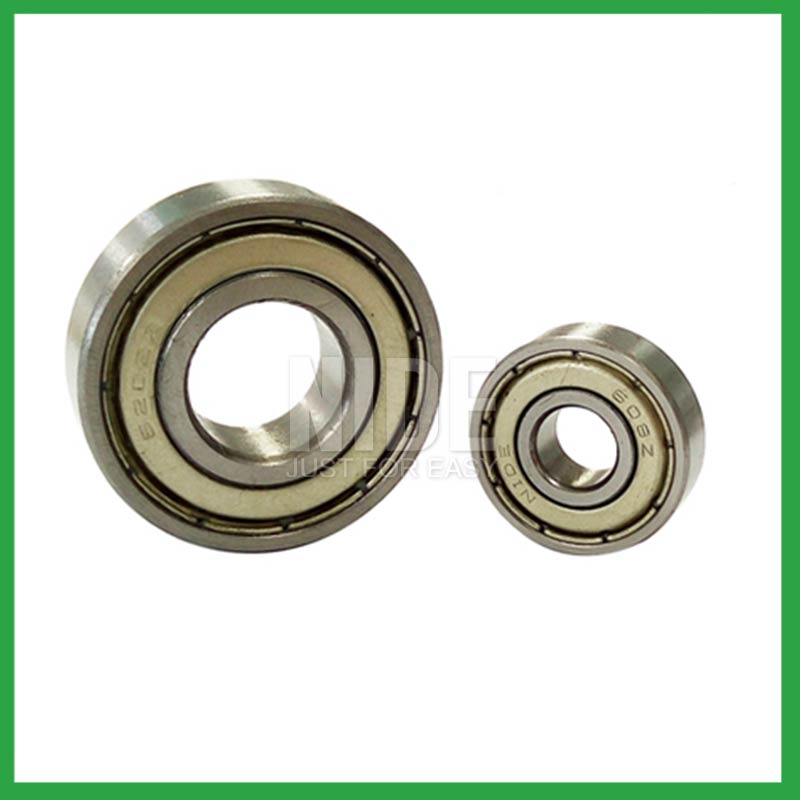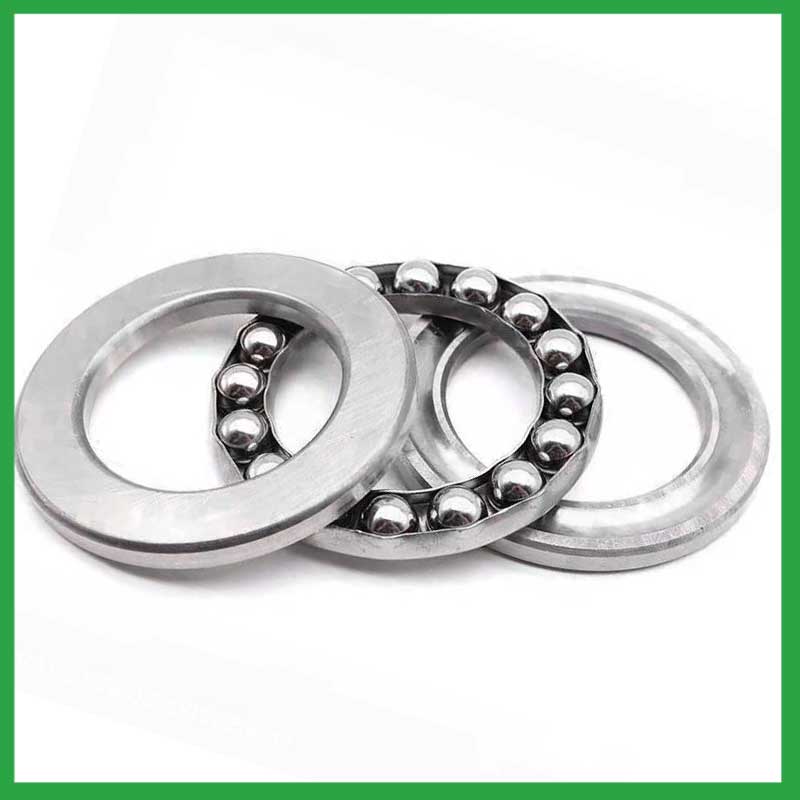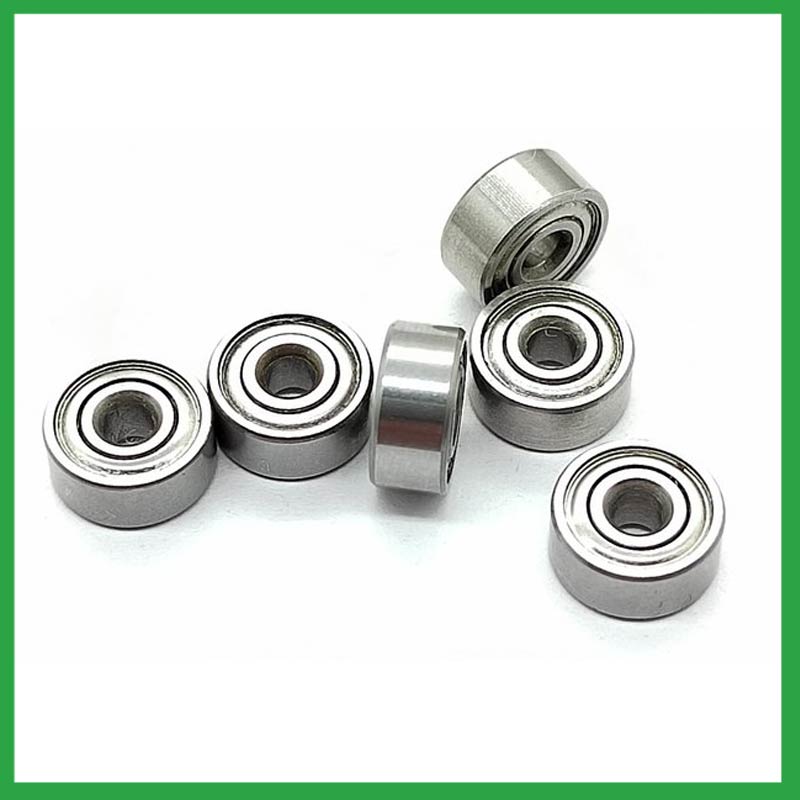PRODUCTS
CONTACT US
Ningbo Nide International Co., Ltd.
一一
· Contact person:Jack Zeng
· Mob/Whatspp/WeChat:0086-13738869026
· Email:emarketing@nide-group.com;marketing4@nide-group.com
· Add:No. 169, Wohushan Road, Daqi Subdistrict, Beilun District, Ningbo, China

Nide team could manufacture ball bearing as per customer’s drawing and samples.
If customer only has samples, we could also design drawing fo r our customer.
We also provide customized service.
Our ball bearing is widely applied the different industrials.
Ningbo Haishu Nide International Co., Ltd was established in 2010. We produce ball bearing,shaft,fan,magnet,thermal protector,carbon brush,motor cover and lamination and other products. Our unwavering commitment to quality has been recognized by the National Testing Center and the Zhejiang Provincial Testing Center. We adhere to ISO 9001:2015 and CE statior standards, prioritize quality, and operate with integrity.
We prioritize quality and first-class service, constantly pursuing perfection. We have a deep understanding of the precise needs of our customers, and our important motor component manufacturing network and strict quality control system enable us to provide high-quality products to customers at reasonable prices.

| Parameter | Information |
| Product Name | ball bearing implants |
| Place of Origin | Ningbo,Zhejiang |
| Brand Name | Nide |
| Material | chrome steel, etc. |
| Type | Ball |
| Warranty | 3months-1year |
| Port | Ningbo/Shanghai |
| Application | food processing machinery, etc. |
| Size(mm) | customize |
| Color | gray+customized |
| Precision Rating | as per customer's requirement |
| Certification | ISO 9001 Certification,CE-stator coil forming machine,ISO9001:2015 certificate,etc |
| Feature | High precision,High speed...etc |
| Packaging Details | Suitable for sea transportation |
| Service | one-stop service |
| Model Number | ball bearing |
| Supply Ability | 100000-500000 Piece/Pieces per Month |
| Lead time (days) | 15-20 (To be negotiated) |
Please note: The above table data is for reference only. For specific information, please contact us.
The precision range of ball bearing implants is from ABEC7 to ABEC9, with a particle size of 0.3 μ m. Among them, ABEC9's ball bearings have the best precision range and are widely used in the electronics industry, precision measurement industry, and so on.
Before use, the model, size, and design of the ball bearing should be confirmed to ensure suitable application;
During installation, the installation load of the ball bearing should be minimized as much as possible to avoid unnecessary damage;
The bearing shaft and the bearing frame should be stable at the same time to avoid excessive tension.
Ball bearings have many advantages, making them highly competitive in the market.
Firstly, they are very durable and have good wear performance, making their service life longer than many other types of bearings.
Secondly, they are easy to install and can provide low friction performance in various applications.
Thirdly, they require a relatively low level of maintenance, making them cost-effective.
In addition, compared to many other types of bearings, their purchase cost is relatively low, making them an economical choice.




ball bearing implants---FAQs Guide
2.What maintenance practices are recommended to extend the lifespan of ball bearing implants and prevent premature failure?
3.What are the common materials used in ball bearing implants manufacturing?
4.As a ball bearing implants manufacturer,What is your payment method?
5.What are the advancements and innovations in ball bearing implants technology that have emerged in recent years?
6.How do manufacturers ensure the quality and reliability of ball bearing implants through material selection and precision machining?
7.What are the standard sizes and dimensions of ball bearing implants?
8.Can ball bearing implants operate in high-temperature environments like industrial ovens or furnaces, and how are they protected from heat-related damage?
9.Are there ball bearing implants designed for use in critical medical equipment?
10.How do different ball bearing implants designs, such as deep groove, angular contact, or thrust bearings, cater to specific applications?
11.What is the load distribution within a ball bearing implants, and how does it vary between different bearing configurations?
12.Do ball bearing implants come in various tolerance classes?
13.How do preloaded ball bearing implants enhance rigidity and reduce clearance in high-precision applications?
14.Can ball bearing implants be used in vacuum or cleanroom environments, and what measures are taken to prevent outgassing or contamination?
15.What is the typical noise level associated with ball bearing implants, and how are noise-reduction techniques applied?
1.About ball bearing implants,Can I add my own logo?
Yes, you can add your logo on bearings and packing box. We supply OEM SERVICE including bearing's size, logo, packing, etc.
2.What maintenance practices are recommended to extend the lifespan of ball bearing implants and prevent premature failure?
Proper handling and installation of ball bearing implants is essential to preventing premature failure. Ensure that bearings are stored and transported in a clean, dry, and vibration-free environment. During installation, ensure that bearings are properly aligned, and torque is applied correctly.
3.What are the common materials used in ball bearing implants manufacturing?
Most ball bearing implants are made of a type of steel known as high carbon chromium steel, often called chrome steel. This is used for reasons of cost and durability. Bearings are also made from other materials such as stainless steel, ceramics and plastic.

4.As a ball bearing implants manufacturer,What is your payment method?
We accept T/T, PAYPAL or Western Union, credit card or via ALIBABA Assurance order.
5.What are the advancements and innovations in ball bearing implants technology that have emerged in recent years?
Significant advancements have been made in ball bearing implants steels over the years. Modern, ultra-clean bearing steels contain fewer and smaller non-metallic particles, giving ball bearings greater resistance to contact fatigue.
6.How do manufacturers ensure the quality and reliability of ball bearing implants through material selection and precision machining?
High-precision measuring instruments, such as micrometers and gauges, are used to check the dimensions of the rings and balls to ensure they meet tight tolerances. Surface Finish Inspection: Surface finish is assessed using profilometers to ensure the required smoothness and low friction characteristics.

7.What are the standard sizes and dimensions of ball bearing implants?
ball bearing implants size charts are widely available, and can be used to find the measurements of a specific bearing. Series 6200 and 6300 are the most commonly used, and typically range from 10 x 30 x 9 mm (. 394 x 1.181 x . 354 in) to 150 x 320 x 65 mm (5.906 x 12.598 x 2.559 in).
8.Can ball bearing implants operate in high-temperature environments like industrial ovens or furnaces, and how are they protected from heat-related damage?
ball bearing implants are capable of working at temperatures up to +842°F (+450 °C). Special lubricants, seals and coatings make this possible by protecting the ball bearings from heat damage.
9.Are there ball bearing implants designed for use in critical medical equipment?
Precision ball bearing implants are among critical components in medical devices that are vital to ensuring patient safety. Correct choice of suitable ball and ring materials and the right product design can ensure high-precision bearings — and medical devices — have a long service life.
Precision bearings are used in a wide variety of medical devices including surgical power tools, ventilators and heart pumps — and patient safety depends on them all. Whatever the device, there is an onus on medical device original equipment manufacturers (OEMs) to ensure that the right type of bearings are chosen, and fit precisely into the application.

10.How do different ball bearing implants designs, such as deep groove, angular contact, or thrust bearings, cater to specific applications?
Deep groove ball bearing implants: Deep groove ball bearings are the most common type. They can handle both radial and axial loads. Angular contact ball bearings: Angular contact ball bearings have higher than average internal axial clearance. They can handle axial loads in one direction and moderate radial loads.
11.What is the load distribution within a ball bearing implants, and how does it vary between different bearing configurations?
The load distribution between the rolling elements and raceway is crucial in performance evaluation of rolling element bearings. Determine the load distribution by measuring the strain response at the bearing surface with a notched housing. Finite element analysis shows that the introduction of notches does not affect the load distribution. An experimental system was developed to investigate the load distribution in a cylindrical roller bearing. The experimental static load distribution agrees well with the theoretical calculation. The dynamic load at specific position of load zone reflects the manufacture difference among rollers and dynamic balance of distributing loads.
12.Do ball bearing implants come in various tolerance classes?
Bearing tolerances are standardized by classifying bearings into the following six classes (accuracy in tolerances becomes higher in the order described): 0, 6X, 6, 5, 4 and 2.

13.How do preloaded ball bearing implants enhance rigidity and reduce clearance in high-precision applications?
Enhance Rigidity: By applying a controlled axial force, preload increases the bearing's resistance to external forces and moments. This heightened rigidity is essential in applications where any deflection or misalignment must be minimized, such as in machine tools or robotic systems.
14.Can ball bearing implants be used in vacuum or cleanroom environments, and what measures are taken to prevent outgassing or contamination?
Bearings specify stainless steel for vacuum or cleanroom applications as stainless steels used for the rings, balls and retainer exhibit low outgassing. They usually supply open or shielded stainless steel bearings as vacuum bearings as these will outgas less than a nitrile rubber sealed bearing.
15.What is the typical noise level associated with ball bearing implants, and how are noise-reduction techniques applied?
To measure in accurate way the ball bearing implants noise under rotation during their manufacturing process is a key activity particularly in the production of medium, small and ultra-small deep groove ball bearings. This capability in bearings noise analysis has become the real distinguishing element between a standard bearings noise equipment and a superior class one.
The various types of vibration and sound in rolling bearings can be grouped in four main categories: structural, manufacturing, handling and other. The structural vibration consists mostly of race, click, squeal and cage noise: it can be continuous or intermittent depending on specific cases. The manufacturing vibration is instead related to the waviness noise generated by the geometrical imperfections of inner and outer ring and of rolling elements, being always continuous in nature. The so-called handling vibration is normally associated with flaw and contamination and is generating – in most of the cases – irregular noise. Then there are other types of vibrabition that include noise generated by sealing and lubricant (irregular) or by runout (continuous).


